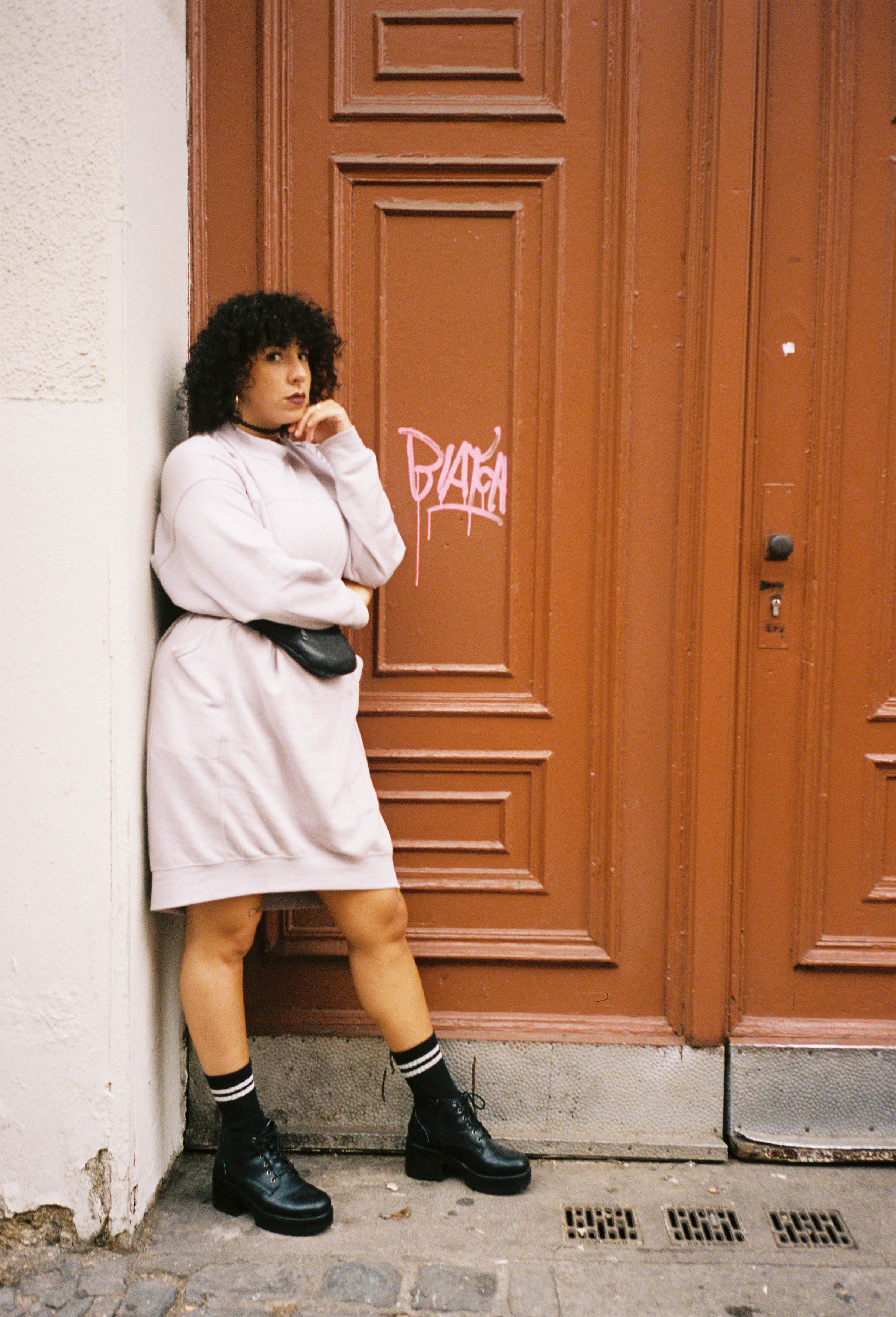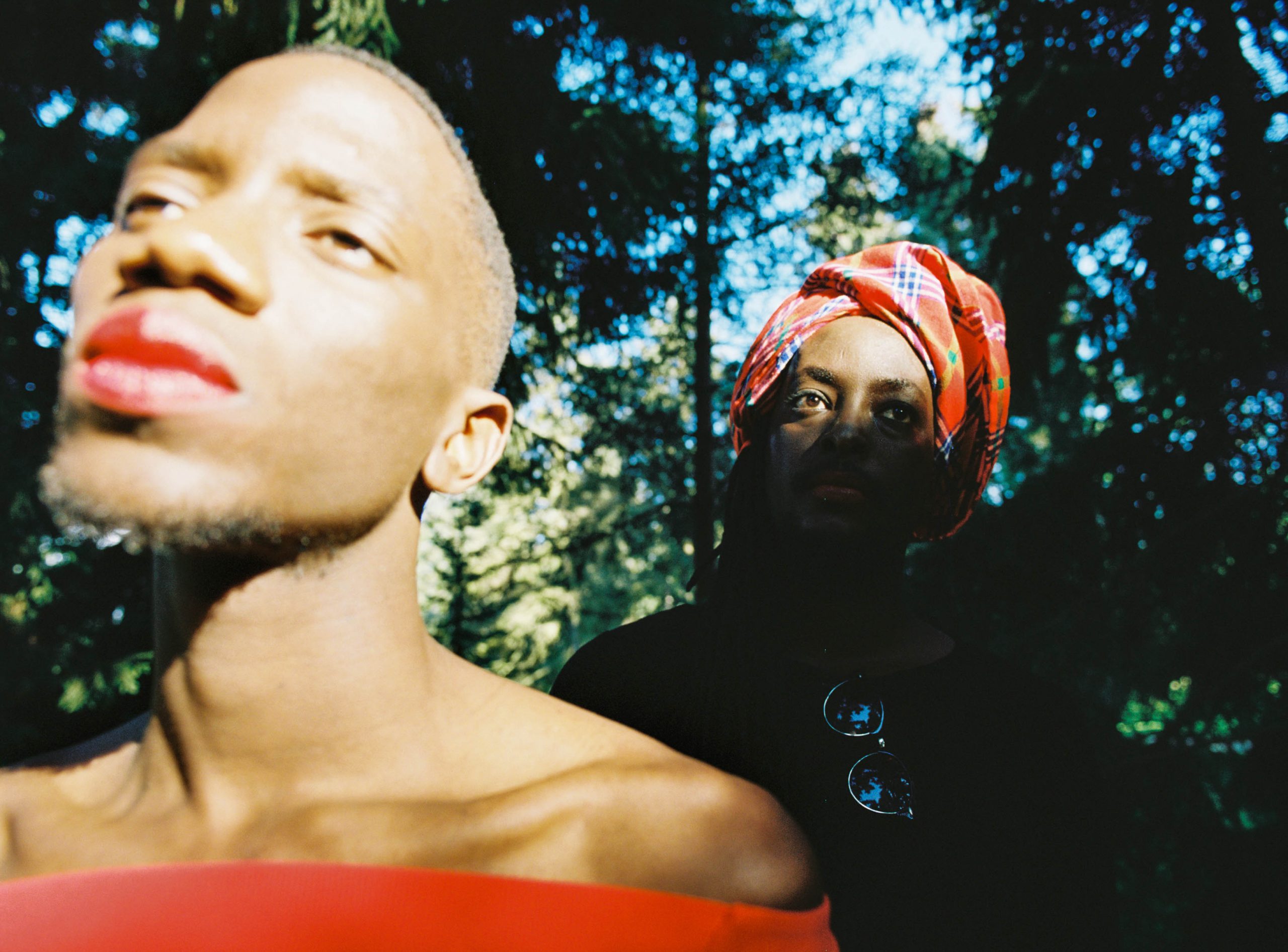Summing up everything that Elijah Ndoumbé encompasses is no easy task. The magnitude of their brilliance is enthralling and their approach is delicately interrogatory and essentially decolonial. Calling Elijah an artist is a fitting label but really Elijah is gifted & accountable to the need of expressing themselves and members of their community through various channels.
Born to a French father with Cameroonian roots, Elijah’s father was considered métis in the country where Elijah was born and initially racialised, Paris, France. The term métis suggests “racial impurity” due to being part European and part African, Africa being considered inferior. There was no conversation about Elijah’s father’s Blackness. The only time Elijah would indulge in their ancestry would be through the traditional meals their Cameroonian grandmother prepared. Elijah later moved to the West coast of America, where Elijah’s white mother is from.

“The thing about ballet is that it is a form of dance that relies on a particular and biased body type…this experience of art was very fucking gendered and very racialised and I didn’t realise it at the time because of the context of the space that I was raised in…I don’t want to be the only weirdo in the room, I want to feel seen. When you feel desperately isolated and alone because you know something is different about you and there is shame attached to that, like throughout my childhood, there was shame attached to the desire I have and the ways in which it would show up in my life or the ways I would respond.”

Elijah’s becoming was profoundly jolted during their time at Stanford University where they were “severely politicised.” Studying “Power” and “History” within the context of their bachelors in African & African American Studies and Feminist, Gender & Sexuality Studies intensely informed Elijah about the dynamics of the violent histories that riddle their body, their family’s bodies, and the bodies of members of their community. Subsequently, this questioning of embodiment has nuanced Elijah’s work. “It’s actually quite a decolonial way of thinking – to burst out of the frameworks and to imagine what it looks like for us to build our own while simultaneously infiltrating the ones that exist…I’m a non-binary trans person, who has body dysphoria, also regardless of my complexion, I’m also Black, I’m a person of colour, I’m of African decent; I carry these things in the end. I carry a multitude of things and those things are going to show up in all spaces.”

Creative Direction and Styling by Elijah Ndoumbé, Nazlee Arbee, and Thandie Gula-Ndebele
Makeup by Thandie Gula-Ndebele
Assist by Tandee Mkize
Now based in Cape Town, South Africa, Elijah has captured the emotionally intense experiences of Trans womxn who experience a lot of casual violence, through their work with the Sex Workers Education and Advocacy Taskforce (SWEAT) in a video called SISTAAZHOOD: Conversations on Violence. There are also a couple of photoseries’ accessible on Elijah’s website. The prominence of visual work attributes to the attention paid to this creative outlet but there are infinite ways for Elijah to exist.

More recently, Elijah has had the privilege of “doing the work of making space to think”, this time has been an incubation period, in which Elijah has played with other mediums. For example humbly picking up a pen to doodle with some Miles Davis in the background and a “fuck it” mentality. Elijah’s exploration of themselves as an illustrator stems from their desire to be free from operating in fear, especially through a medium that will potentially fuel their other creative expressions. Furthermore, Elijah wishes to deconstruct the notion that only formal training like “art school” certifies one as an “artist” and the labelling of their creation’s as “art”.
Elijah has also been gravitating to the creative medium they first formally explored, dance. Complimentary to these embodied movements that resemble freedom and release are Elijah’s well versed music mixes, which could blare through the speakers of events like the Queer Salon. Created by Elijah and facilitated with a Black & Brown Queer DJ duo, Nodiggity, the Queer Salon makes space for Queer, Trans and non-binary Black, Brown and indigenous people of colour to be prioritised through art. While lamenting with me over experiences on dancefloors in Berlin and public restroom lines in Johannesburg, Elijah accentuated their urgency to continue building and facilitating safe and sustainable community spaces.
Elijah’s current phase of rest has revealed a beauty of the unknown to them and reinforced that despite daily negotiation of their textured identity, their artistry will always be an unyielding, irrefutable and indispensable embodiment of them and theirs.




















